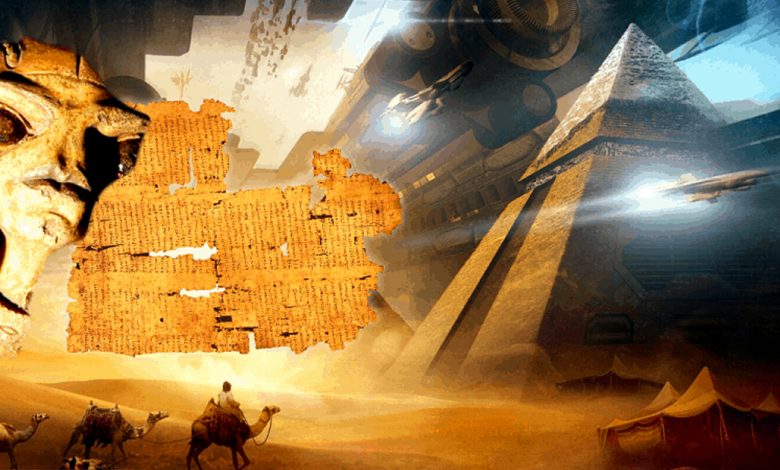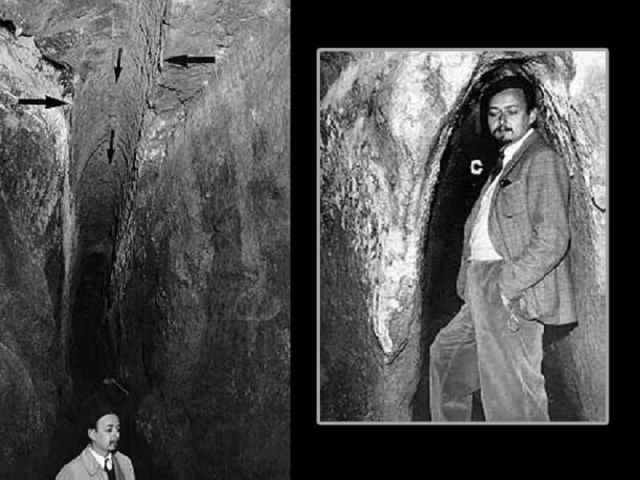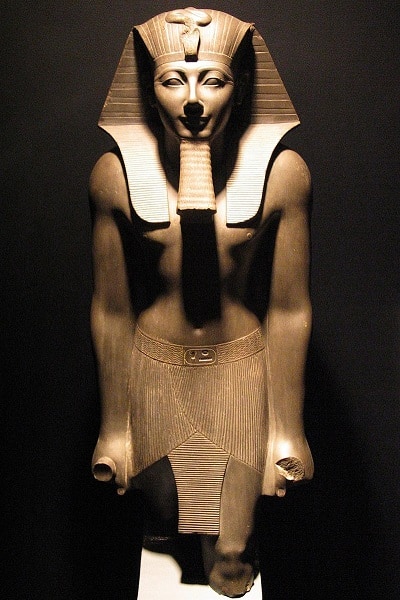This Mysterious Papyrus Discovered In Egypt Described Massive UFO Encounter: Did Ancient Aliens Arrive 3,500 Years Ago?

The first UFO sighting on Earth did not happen on a certain day. Many old wall paintings may depict flying things and extraterrestrial visitors. Due to the massive pyramids, their history, culture, and ancient manuscripts, Egypt is regarded as the most mysterious historical region. The so-called “Tulli Papyrus” is thought to be the first proof of ancient UFOs or flying saucers. This cryptic manuscript claims to be the first written description of a huge UFO encounter that occurred around 1480 BC in Ancient Egypt. The ancient literature describes a high-speed flying craft that lighted up Egypt’s sky before vanishing into space.
Egypt was at its most powerful during the 18th dynasty. Egypt was resurrected with the arrival of the New Kingdom, which brought with it an advanced system for appointing new officials to the regime. Because of the four pharaohs called Thutmose, the new dynasty was also known as the Thutmosid Dynasty. The Tulli Papyrus detailed the massive UFO sightings that occurred under the reign of Thutmosis III, who ordered his scribes to record the incident on a papyrus after witnessing it firsthand.

A hieroglyphics-based facsimile of the Tulli Papyrus. ( Forum on Lifting the Veil )
Despite the fact that the text is centuries old, it was first popularized in the 1930s. Alberto Tulli, director of the Vatican Museum’s Egyptian Section, was traveling through Cairo’s bazaar in 1933 when he purportedly found a piece of ancient papyrus dating from 1480 BC in an antique shop. He constructed a replica of the original and replaced the original hieratic script with hieroglyphs because the relic was too pricey for him.
Tulli’s copy of old papyrus allowed skeptics to question its legitimacy, yet it nonetheless went popular among enthusiasts of ancient astronaut theorists and UFOlogists. Prince Boris de Rachewiltz, an Italian prince, and anthropologist R. Cedric Leonard both translated the text.
Rachewiltz was the first to declare the papyrus to be a component of Thutmose III’s Annals. The following is his translation:
“Among the scribes of the House of Life, it was discovered that a “circle of fire” was approaching in the sky in the year 22, of the third month of winter, at the sixth hour of the day. It didn’t have a head. The terrible stink emanated from its mouth. It had a body that was one rod long and one rod wide. It didn’t have a voice. It approached His Majesty’s residence. Their hearts were jumbled as a result, and they collapsed onto their tummies. They went to the king to inform him of the situation. His Majesty gave the command to consult the scrolls in the House of Life. His Majesty pondered all that was going on at the time.”

One of the interpreters of the Tulli Papyrus was Prince Boris de Rachewiltz. ( From an Unusual Perspective )
The papyrus also detailed the UFO’s structure as well as its massive impact on the environment. According to the translation, the object shone brighter than the Sun in the sky. The king and his troops were present when the incident occurred in the early hours of the evening. A “circle of fire” was the name given to the object.
“As a result, they (the fire circles) rose higher, facing south. Fish and volatiles descended from the heavens. It was a marvel that had never happened before in the history of this Land! Caused incense to be delivered to His Majesty to calm the hearth so that what transpired in the book of the House of Life would be remembered for all time.”
There are numerous issues surrounding Tulli Papyrus, all of which demonstrate a lack of conviction. However, if this amazing aerial phenomenon is accurate, ancient Egyptian astronomers would never confuse a meteor or a shooting star for a “circle of fire.”

Luxor Museum’s statue of Thutmosis III.
Rachewiltz claimed to have discovered the tone version of papyrus (untranslated and unpublished) in Alberto Tulli’s papers later in the 1950s. Although it is exceedingly doubtful that ancient Egyptians misinterpreted “fiery discs” or “circles of fire,” the book claims that they did.
The UFO project “Condon Committee” was supported by the US Air Force in 1968. Samuel Rosenberg and Edward Condon researched the Tulli Papyrus while writing the Condon report. They requested the original document from the Vatican, but were told that “the Papyrus Tulli is not the property of the Vatican Museum.” It has vanished and can no longer be found.”
Further investigation revealed that Alberto Tully left all of his belongings to his brother, a priest at the Lateran Palace. The Papyrus was most likely passed down to the priest as well. Unfortunately, the priest died soon after, and his possessions were passed down to his family, who may or may not have valued the Tully papyrus.
Because there is no original papyrus (which could be missing or hidden), no conclusion can be drawn because the Tulli Papyrus is a translation of a modern transcription of a supposed Egyptian text, not an authentic papyrus.
